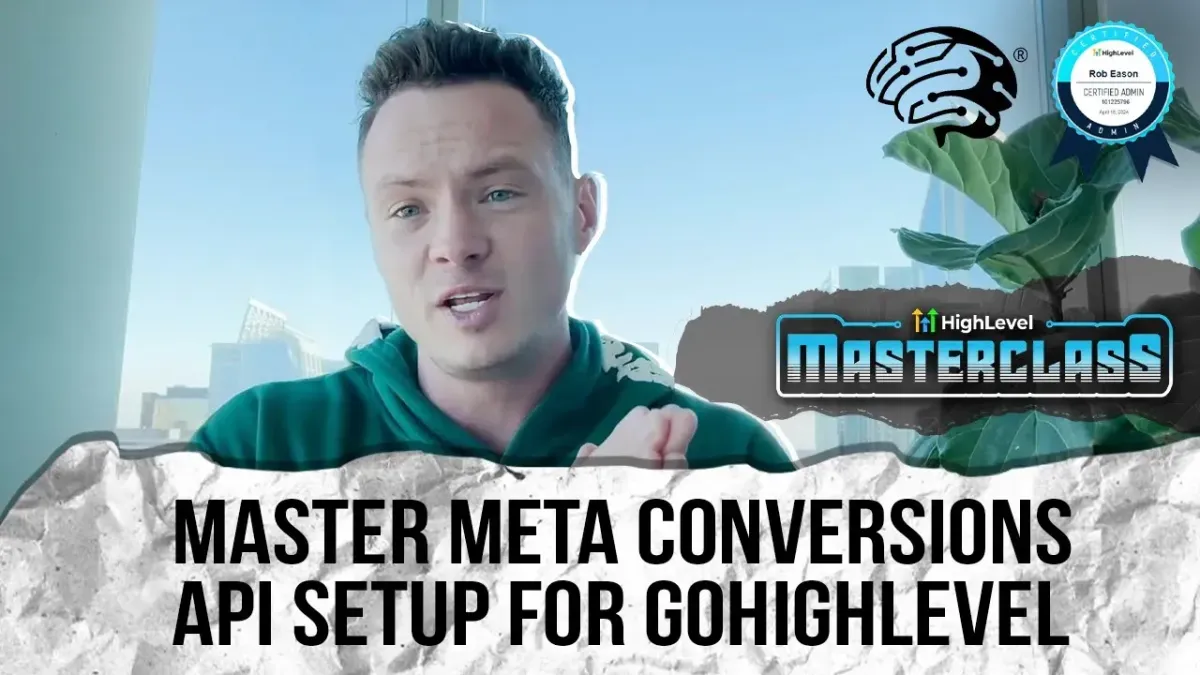
Meta Conversions API Setup for GoHighLevel | MasterclassTraining
Accurate event tracking is the backbone of any successful digital marketing campaign. As privacy concerns grow and tracking restrictions like iOS updates become the norm, tools like the Meta Conversions API have become essential. This guide provides a detailed walkthrough on setting up the Conversions API with GoHighLevel, empowering you to track events with precision and optimize your ad campaigns for maximum ROI.
In this blog, you will learn:
Why the Meta Conversions API is crucial for modern marketers.
Step-by-step instructions to integrate it with GoHighLevel.
Advanced tips for leveraging GoHighLevel’s tools for better tracking and insights.
Let’s dive in!
Why the Meta Conversions API Is Essential
Traditional pixel-based tracking has served marketers well, but it’s no longer sufficient. Privacy policies like Apple’s iOS updates have limited the data pixels can collect. The Meta Conversions API addresses these limitations by enabling server-side tracking, offering the following benefits:
Improved Accuracy: Track events even when cookies are blocked or third-party scripts fail.
Flexibility: Monitor activities beyond your website, such as external sign-ups or purchases.
Enhanced Data Security: Use encrypted server-to-server communication for data transfer.
If you’re an affiliate marketer, agency owner, or business relying on event-driven insights, the Conversions API is non-negotiable.
Step 1: Setting Up Meta Business Manager
Before diving into the API setup, ensure your Meta Business Manager and ad account are ready:
Create a Business Manager Account:
Go to Meta Business Manager.
Set up your business details and create an ad account if you haven’t already.
Generate a Meta Pixel:
Navigate to Data Sources → Web → Create Pixel.
Name your pixel and select “Conversions and Web” as the data type.
Access Token:
Go to your pixel settings and generate an Access Token. This will be crucial for API integration.
Step 2: Linking Meta Pixel to GoHighLevel
To leverage the Meta Conversions API with GoHighLevel, you need to connect the two systems seamlessly:
Log in to your GoHighLevel account.
Navigate to Sites → Settings → Head Tracking.
Paste your pixel ID and access token into the appropriate fields.
Save your changes.
This connection ensures that events tracked by the pixel are transmitted to Meta for reporting and optimization.
Step 3: Setting Up Event Triggers
Event triggers allow you to track specific user actions on your website, such as page views, form submissions, and purchases. Here’s how to configure them:
Open the Event Setup Tool in Meta.
Map URLs to desired events:
Page View: Trigger when users visit any page on your website.
Lead Submission: Use the post-submission page URL as the trigger.
Purchase: Set up the URL for the purchase confirmation page.
Test each event to ensure proper tracking.
Step 4: Advanced Integration for External Events
If you’re tracking actions on external websites (e.g., affiliate sign-ups), you’ll need webhooks or automation tools like Zapier or Make.
Create a Webhook in GoHighLevel:
Use GoHighLevel’s custom fields to capture data from external triggers.
Store this data in a Google Sheet for tracking and troubleshooting.
Connect to Meta Conversions API:
Set up the webhook to trigger specific events in Meta, such as purchases or leads.
Use automation platforms to ensure a seamless data flow.
Step 5: Testing and Troubleshooting
Testing your setup is critical to ensure accuracy. Follow these steps:
Use Meta’s Integration Guide to simulate test events.
Check the Activity Reporting section in Meta to verify data transmission.
Run through scenarios like:
Visiting a tracked page.
Submitting a form.
Completing a purchase.
Fix any discrepancies before launching live campaigns.
Advanced Tips for GoHighLevel Users
Use Snapshots:
GoHighLevel’s snapshots simplify the setup process by pre-configuring workflows for events like lead submissions and trial sign-ups.Assign Conversion Values:
Help Meta’s AI optimize your campaigns by assigning monetary values to each event. For instance:Lead Submission: $10.
Trial Sign-Up: $50.
Automate Data Collection:
Store all captured events in a Google Sheet for a clear, auditable record. This also helps in troubleshooting issues.
Conclusion
Setting up the Meta Conversions API with GoHighLevel might seem daunting, but with this step-by-step guide, you’re well on your way to mastering event tracking. This integration not only ensures better ad performance but also provides you with the insights needed to make data-driven decisions.
For a visual walkthrough, watch the full video tutorial:
MasterMeta Conversions API Setup for GoHighLevel | MasterclassTraining
Subscribe to our channel for weekly tutorials and exclusive insights into marketing automation and GoHighLevel setups.
